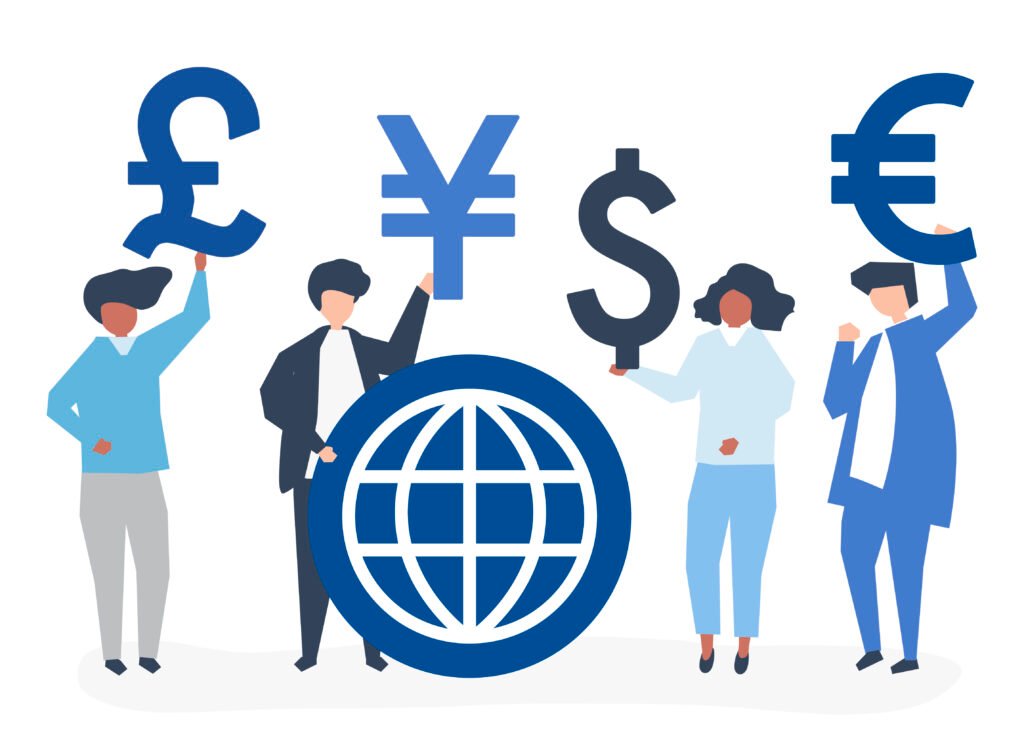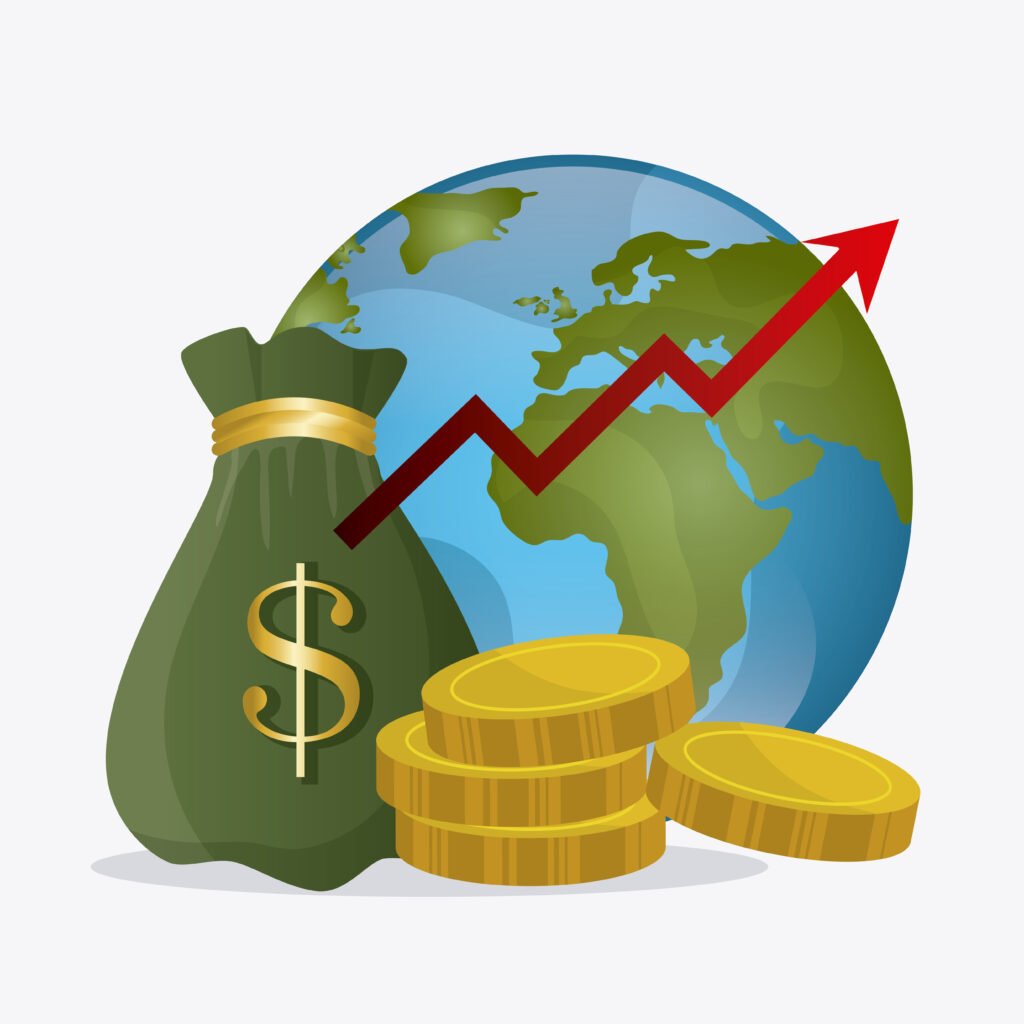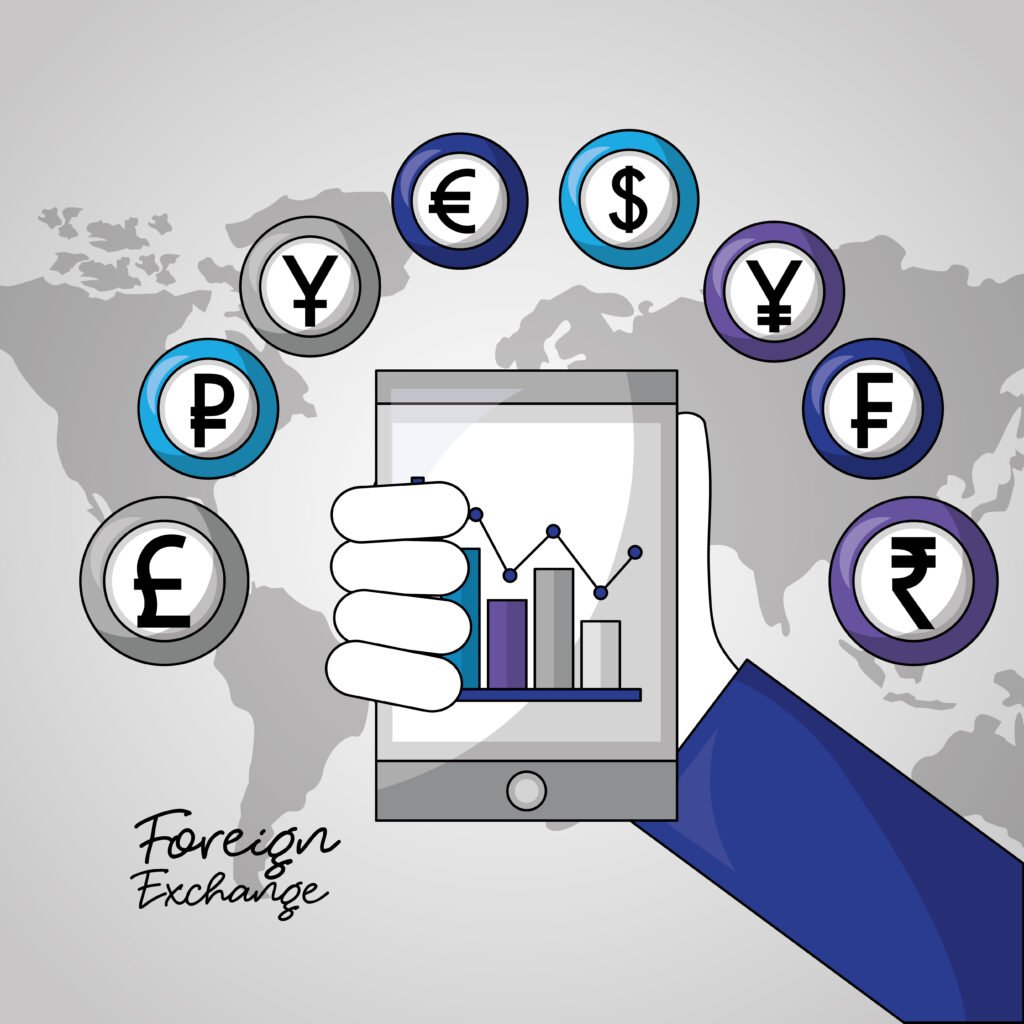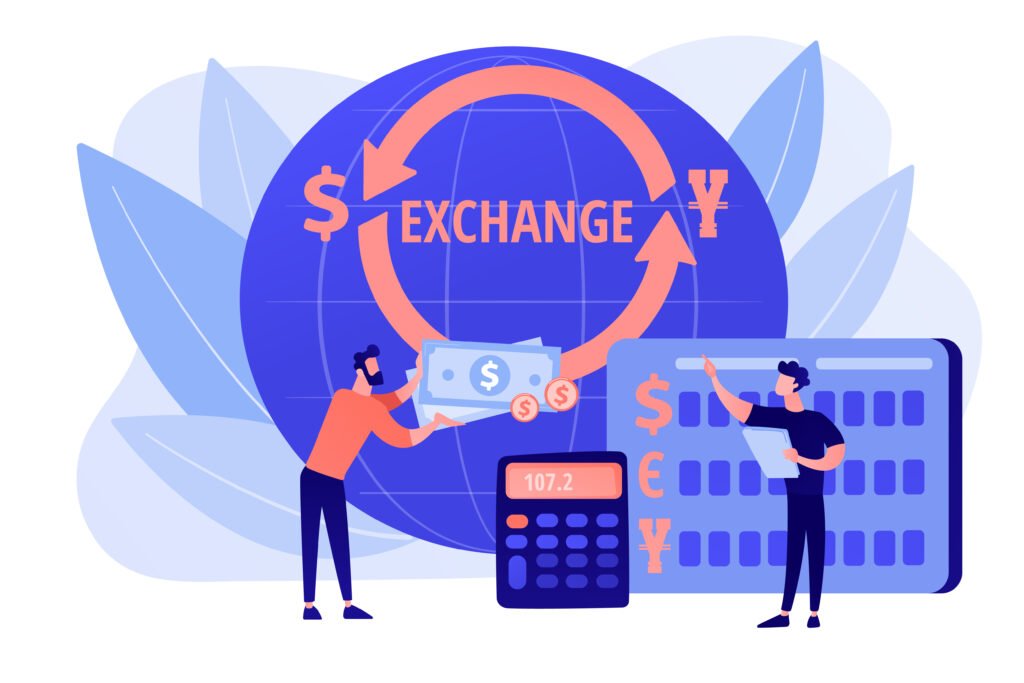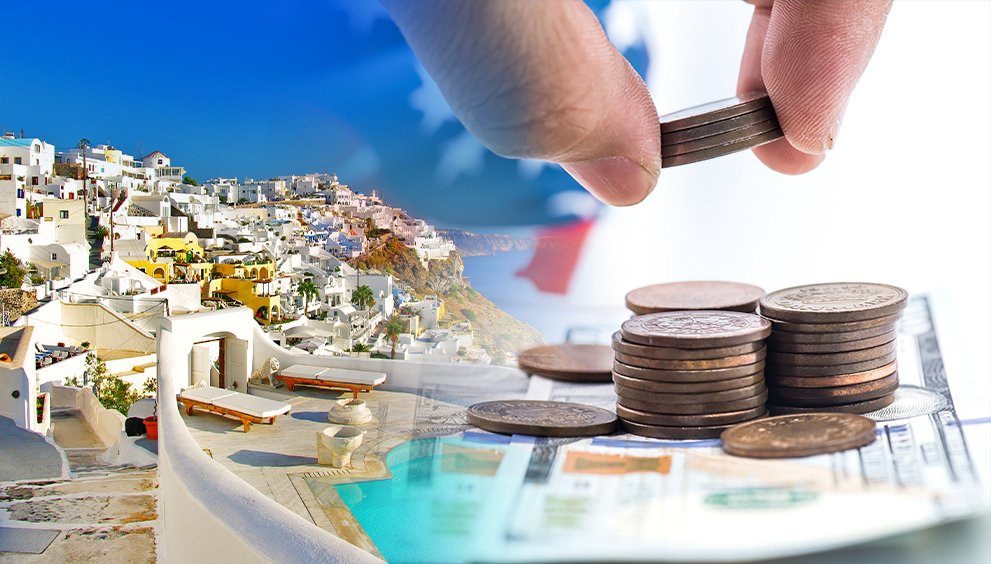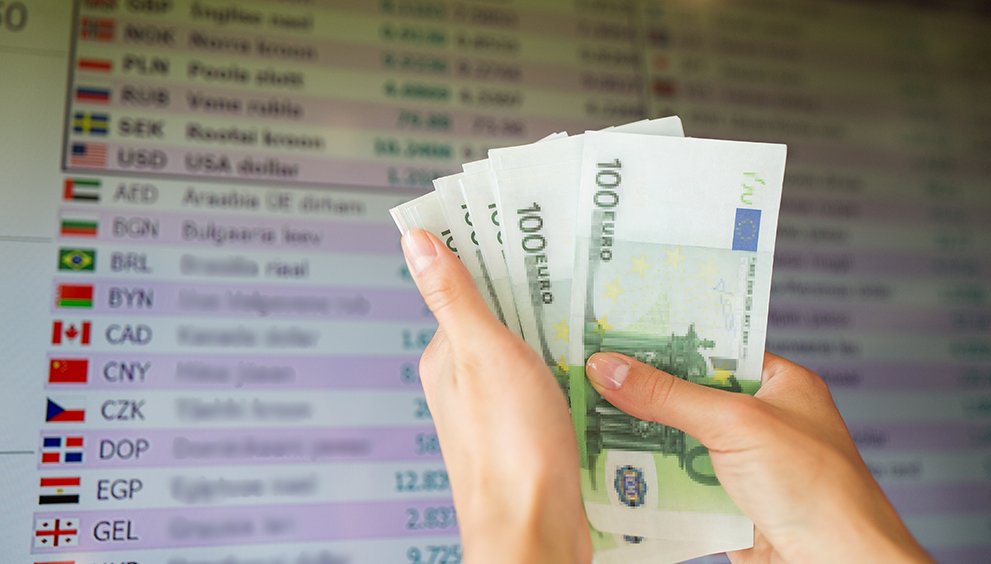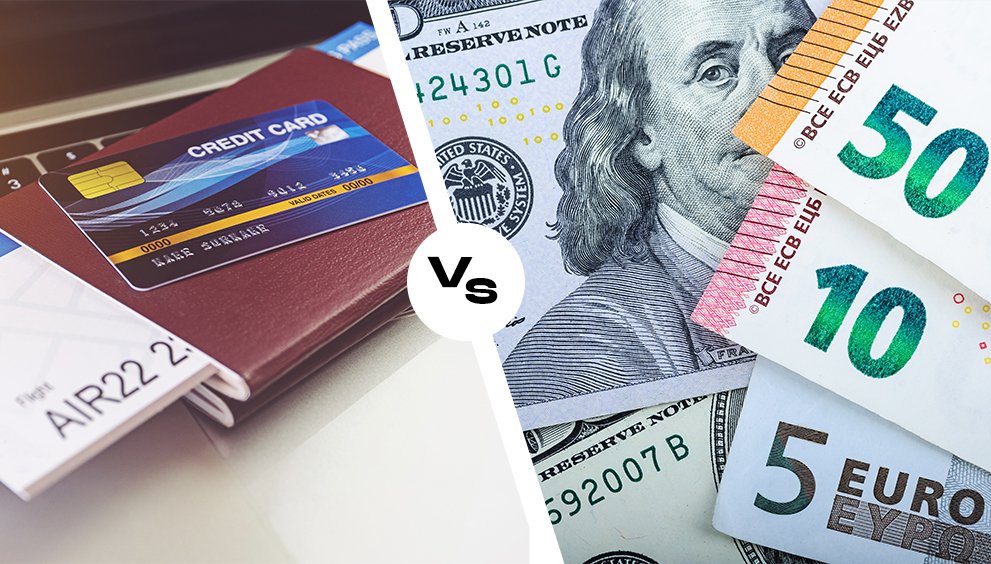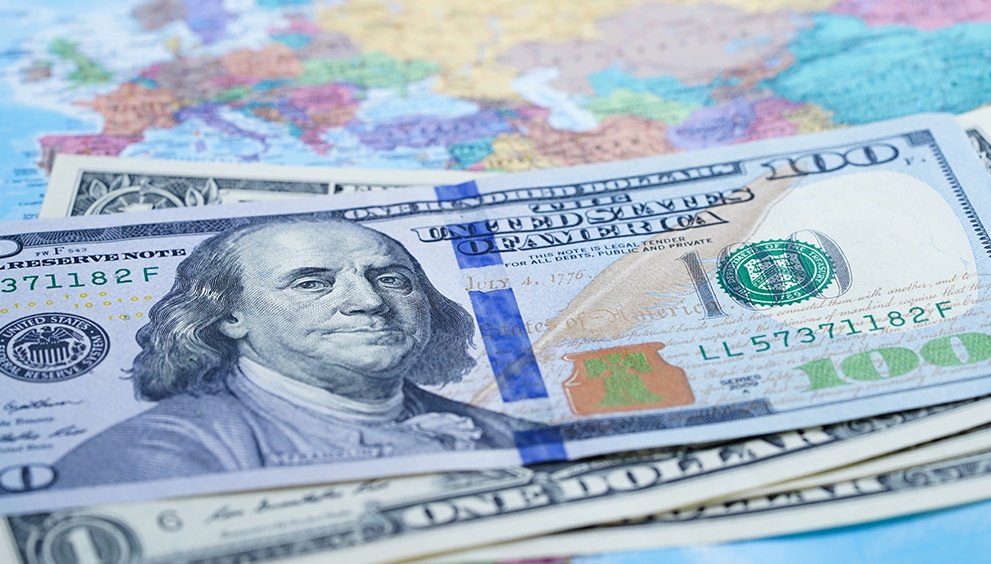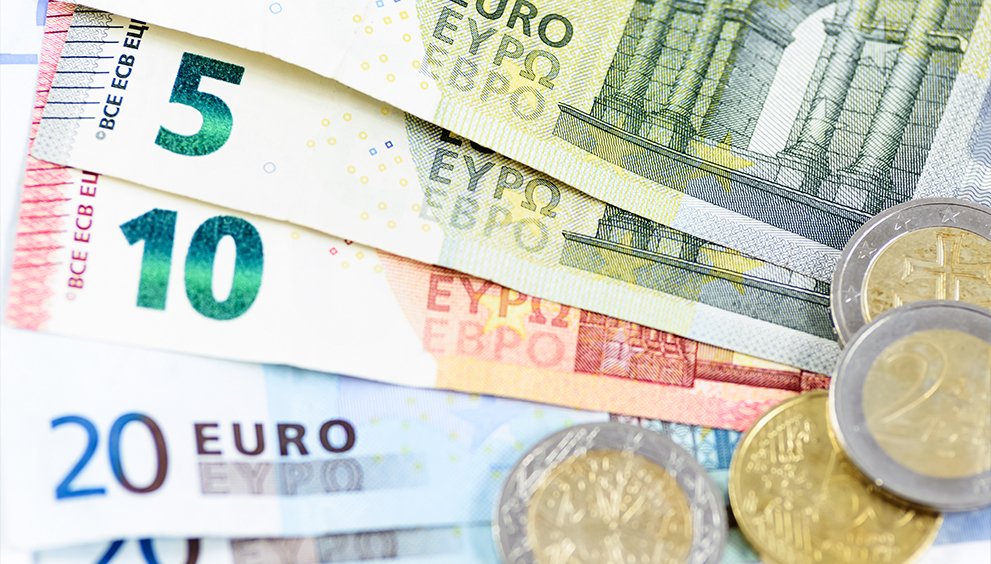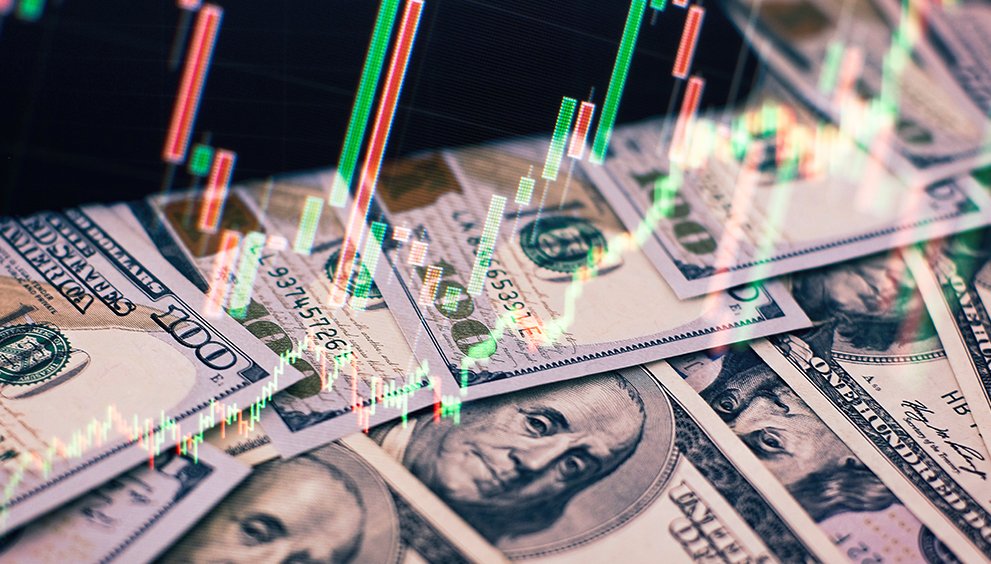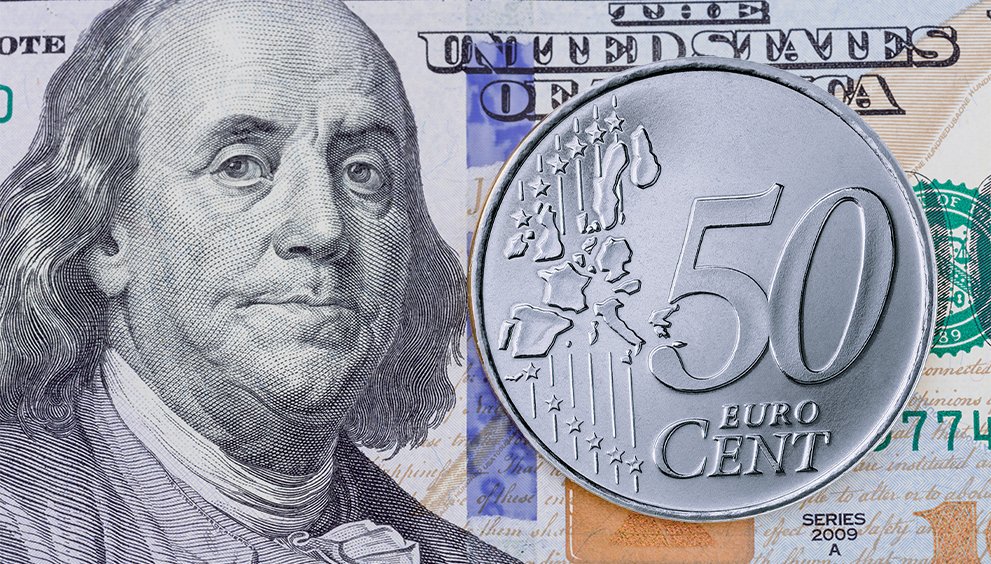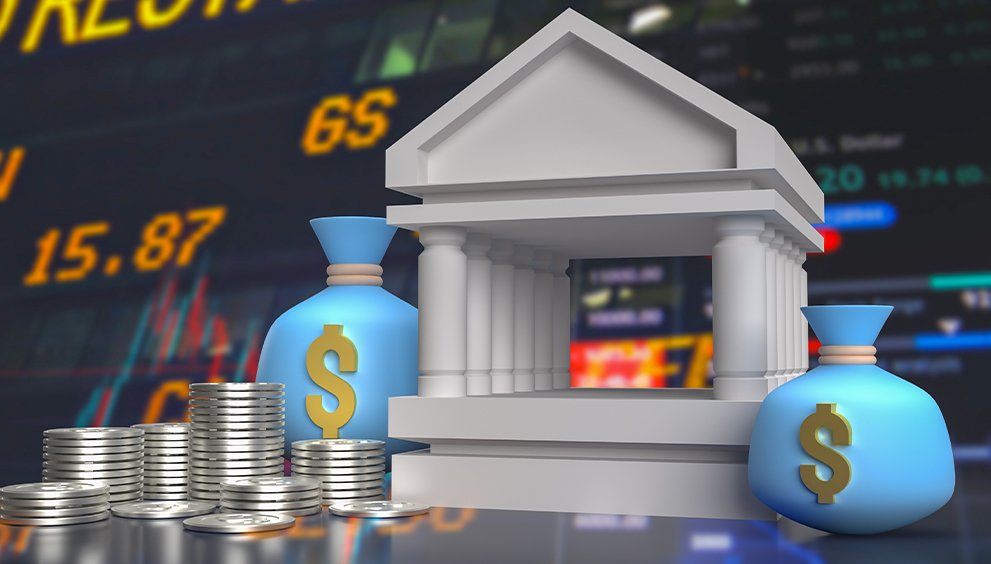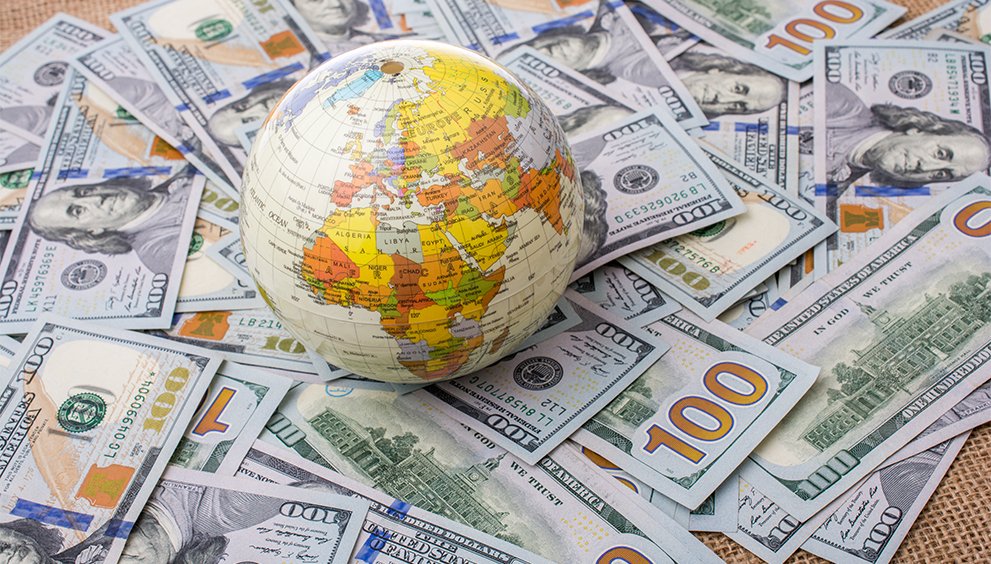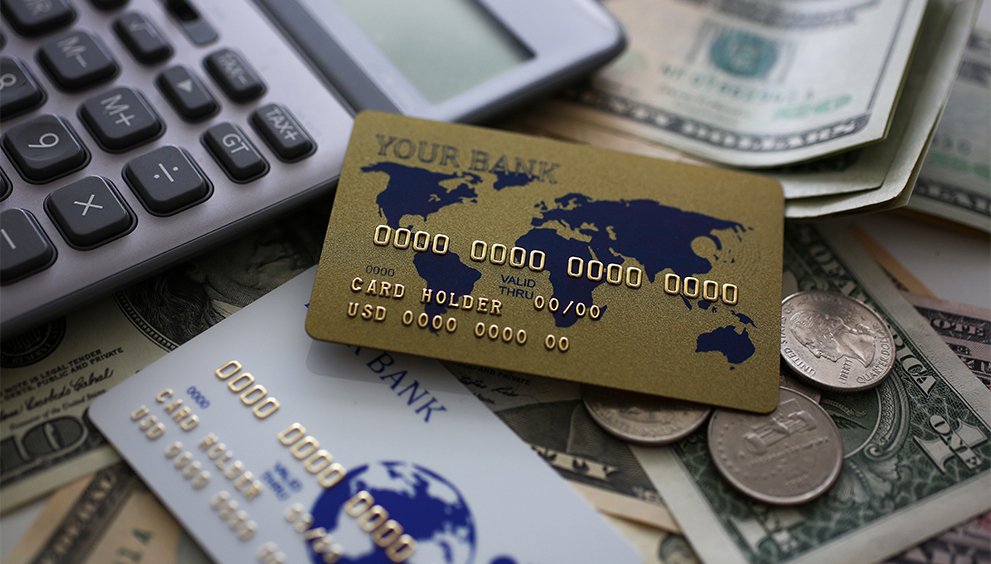Fiscal Policy vs. Monetary Policy: Real-Time Impacts on Currency Exchange Rates

Fiscal and monetary policies are the two fundamental tools governments and central banks use to regulate economic activity. While both policies have distinct functions, they directly and indirectly influence currency exchange rates.
Fiscal policy, controlled by the government, involves changes in taxation and government spending to influence economic growth and stability. Meanwhile, monetary policy, managed by central banks, focuses on controlling inflation, interest rates, and the money supply to maintain financial stability.
The interaction between these two policies shapes investor confidence, capital flows, and currency valuations. This article provides a detailed analysis of how fiscal and monetary policy decisions impact currency exchange rates using real-time examples from 2025.
Fiscal Policy and Currency Exchange Rates
Fiscal policy refers to a government’s use of spending and taxation to influence the economy. While its direct aim is to stimulate or slow down economic activity, fiscal policy also has significant indirect effects on exchange rates. These effects occur through channels such as inflation expectations, trade balances, interest rate adjustments, and investor confidence.
When governments increase spending or reduce taxes, it may lead to currency depreciation due to concerns about inflation or debt sustainability. Conversely, fiscal discipline—characterised by balanced budgets and stable debt levels—can boost investor confidence and strengthen a currency.
A. Expansionary Fiscal Policy and Its Impact on Currency Strength
Expansionary fiscal policy is designed to stimulate growth during economic slowdowns. It typically includes increased public spending, tax cuts, and stimulus programmes. While it can successfully boost short-term growth, the long-term implications for currency strength depend on the balance between economic output, inflation pressures, and fiscal sustainability.
How Expansionary Fiscal Policy Affects Exchange Rates:
- Short-term growth boosts consumer demand and investment, potentially attracting foreign capital.
- Rising inflation expectations may erode currency value if not matched by tighter monetary policy.
- Larger budget deficits raise concerns about long-term debt servicing, weakening investor confidence.
Case Study: United States Tariff Policies (2025)
In February 2025, former President Donald Trump introduced new tariffs on key imports like automobiles and semiconductors. The aim was to reduce trade deficits and promote domestic manufacturing.
Short-Term Impact:
- The U.S. dollar initially strengthened as markets anticipated a reduction in imports, which would narrow the trade deficit.
Long-Term Concerns:
- Retaliatory tariffs from trading partners like China and the EU introduced uncertainty.
- Markets feared slower export growth and dampened global trade, potentially weakening U.S. economic prospects and the dollar.
Takeaway:
Expansionary fiscal policy may strengthen a currency temporarily, but longer-term risks—like inflation and reduced trade competitiveness—can trigger depreciation if fiscal imbalances grow unchecked.
B. Fiscal Deficits and National Debt Concerns
When governments persistently spend more than they earn, they run fiscal deficits, accumulating national debt. While borrowing can fund productive investments, sustained deficits signal potential instability and creditworthiness issues, undermining currency strength.
Why Fiscal Deficits Matter for Exchange Rates:
- Investor Sentiment: Large deficits raise concerns about debt repayment, making foreign investors cautious.
- Capital Outflows: As confidence weakens, investors shift funds to more stable economies, causing the domestic currency to depreciate.
- Inflation Risks: Deficits may require monetisation (printing money), which can fuel inflation, further eroding the currency’s value.
Case Study: UK’s Budget Deficit and the Pound Sterling (2025)
In early 2025, the UK government faced a widening budget deficit due to higher public spending on healthcare and infrastructure, alongside slower tax revenues.
Market Reaction:
- The British pound (GBP) weakened against the U.S. dollar and the euro as investors questioned the government’s ability to rein in debt levels.
- Foreign investors reduced exposure to UK bonds, fearing rising debt and declining returns.
Inflation Pressure:
- As the pound depreciated, import prices rose, especially for energy and food, contributing to domestic inflation.
- The Bank of England faced a difficult trade-off: raise interest rates to control inflation (at the risk of slowing growth) or stay dovish and risk further currency weakness.
Takeaway:
Fiscal deficits can undermine a nation’s currency by eroding confidence and creating inflationary pressures—especially when they are perceived as unsustainable. Fiscal policy has powerful implications for currency markets, not only through economic growth and inflation expectations but also through its impact on debt dynamics and investor trust. While expansionary policies can be effective in supporting growth, if not carefully managed, they may lead to long-term currency depreciation and financial instability.
Monetary Policy and Currency Exchange Rates
Monetary policy plays a fundamental role in shaping the value of a nation’s currency. It comprises the actions taken by a country’s central bank to regulate the money supply, interest rates, and credit conditions with the goal of achieving macroeconomic stability. While the primary objectives of monetary policy include controlling inflation, stabilising the financial system, and supporting economic growth, one of its most visible side effects is its impact on currency exchange rates.
When central banks adjust interest rates or conduct open market operations, they send strong signals to domestic and global investors—signals that often prompt capital inflows or outflows, altering the demand for a currency and, in turn, influencing its value on the foreign exchange market.
Understanding the Mechanisms: How Monetary Policy Influences Exchange Rates
1. Interest Rate Differentials and Capital Flows
One of the most direct channels through which monetary policy impacts exchange rates is the interest rate differential—the difference in interest rates between two countries. Investors naturally seek the highest possible return for the lowest risk, which means capital tends to flow into countries with higher interest rates.
When a central bank raises interest rates:
- It increases the returns on domestic financial assets (e.g., bonds, savings).
- Attracts foreign investors seeking higher yields.
- This boosts demand for domestic currency, as foreign investors must purchase the currency to invest.
- This demand pushes the currency upwards in the forex market.
Conversely, when a central bank cuts interest rates:
- It makes domestic assets less attractive.
- Reduces foreign investment inflows.
- This leads to capital outflows, which depress the value of the currency.
This interest rate–exchange rate linkage forms the foundation of many speculative trading strategies, such as the carry trade, where traders borrow in low-yield currencies to invest in higher-yielding ones.
2. Inflation Expectations and Monetary Tightening
Central banks also use monetary policy to manage inflation expectations. A rise in inflation erodes the purchasing power of money, which can lead to a weaker currency if not controlled.
If inflation is rising too quickly:
- Central banks may implement tight monetary policy by raising interest rates or reducing the money supply.
- This can reinforce confidence in the currency by signalling a commitment to price stability.
- Higher interest rates can also anchor inflation expectations, making the domestic currency more attractive.
However, if inflation remains low or stagnant despite economic growth, central banks might delay tightening, which can lead to currency stagnation or depreciation if other countries are raising their rates.
3. Monetary Policy Tools That Influence Exchange Rates
Central banks use several instruments to shape monetary policy, and each has a different impact on currency value:
A. Interest Rate Policy
- The most powerful and commonly used tool.
- Directly influences the cost of borrowing, consumer spending, investment, and savings.
B. Open Market Operations (OMO)
- Buying or selling government securities in the open market to increase or decrease liquidity.
- Buying securities (expansionary) increases the money supply → may devalue the currency.
- Selling securities (contractionary) reduces the money supply → may strengthen the currency.
C. Reserve Requirements
- Regulates the amount of money banks must hold in reserve.
- A lower reserve ratio boosts lending and economic activity, often weakening the currency if inflation rises.
D. Forward Guidance
- Communicating future policy intentions to influence market expectations.
- If a central bank signals future rate hikes, the market may pre-emptively strengthen the currency.
4. The Role of Expectations and Speculation in Forex Markets
Foreign exchange markets are forward-looking. This means traders don’t just respond to current monetary policy—they respond to expected future changes. If a central bank signals tightening ahead of time (even before it raises rates), the currency can strengthen in anticipation.
Market participants also assess:
- Central bank credibility (Will they follow through on guidance?).
- Inflation trends and forecasts.
- Political risks that may affect central bank independence or decision-making.
- Speculative capital can move quickly in response to changes in sentiment, causing sharp short-term volatility even if no policy change has been implemented yet.
Case Studies: Monetary Policy in Action
A. Bank of Japan and Yen Appreciation (2025)
Amid speculation in early 2025 that the Bank of Japan (BoJ) would raise rates for the first time in years due to stable inflation, investors began moving funds into yen-denominated assets.
The expectation of policy tightening alone caused the yen to strengthen.
This led to the unwinding of carry trades that had previously weakened the yen.
The BoJ, careful not to derail export competitiveness, adopted a cautiously hawkish tone, signalling gradual hikes.
B. Bank Indonesia and Rupiah Stability (2025)
Bank Indonesia kept its benchmark rate unchanged at 5.75% to maintain investor confidence in the rupiah amid global uncertainty. While other regional banks hinted at rate cuts, Indonesia’s decision:
- Helped prevent capital flight.
- Supported currency stability without aggressive tightening.
- Balanced between inflation control and growth preservation.
5. Quantitative Easing (QE) and Its Currency Implications
Quantitative easing is another key monetary policy instrument typically used during economic downturns. It involves central banks injecting liquidity into the economy by purchasing government or private assets.
While QE supports growth, its effect on currency tends to be negative because:
- It lowers yields on domestic assets, reducing their attractiveness to investors.
- It increases the money supply, potentially leading to currency oversupply in forex markets.
Example: China’s Cautious Monetary Stance (2025)
In 2025, the People’s Bank of China (PBOC) refrained from easing too aggressively despite economic pressures. The aim was to:
- Avoid weakening the yuan, especially amid renewed US-China trade tensions.
- Signal financial discipline and retain foreign investor trust.
- Preserve financial stability in the banking sector.
Why Monetary Policy Matters in Forex Markets?
Monetary policy is more than just a domestic economic tool—it’s a signal to global markets. Through interest rate changes, liquidity control, and clear communication, central banks can greatly influence the flow of global capital and the relative strength of their currencies.
For currency traders, policymakers, and international investors, understanding the nuanced relationship between monetary policy and exchange rates is critical to navigating an increasingly interconnected global economy.
The interaction between fiscal and monetary policy significantly shapes currency dynamics in the global financial markets. While each policy operates independently, their combined effects often influence investor sentiment, capital flows, and currency strength in more complex and sometimes unpredictable ways.
A. The U.S. Dollar and Cross-Currency Swaps (2025)
Understanding the Context
In 2025, the United States maintained elevated interest rates due to continued monetary tightening by the Federal Reserve. While this policy supported the dollar’s strength, it also raised the cost of borrowing for American corporations.
How Cross-Currency Swaps Work
A cross-currency swap is a derivative contract in which two parties exchange principal and interest payments in different currencies. These swaps are often used to:
- Hedge against exchange rate fluctuations.
- Reduce borrowing costs.
- Align debt obligations with revenue streams in a specific currency.
Case Insight: U.S. Companies Using Swaps to Access Cheaper Euro Funding
- Challenge: U.S. firms faced high domestic borrowing costs due to elevated Fed rates.
- Strategy: By issuing debt in euros—where interest rates were lower—they could reduce interest expenses.
- Swap Mechanism: They entered cross-currency swaps to convert euro-denominated loans into U.S. dollars, effectively funding operations at a lower cost.
Currency Risk Consideration
- If the U.S. dollar depreciated significantly against the euro over the term of the swap, these companies could incur currency losses when converting profits or servicing the loan.
B. European Central Bank’s Policy Tightening and the Euro (2025)
Policy Background
- In early 2025, the European Central Bank (ECB) adopted a gradual tightening path to address persistent inflationary pressures across the Eurozone. The move followed a prolonged period of ultra-loose monetary policy and aimed to stabilise consumer prices while sustaining economic growth.
Exchange Rate Impact
- The ECB’s policy shift led to increased demand for euro-denominated assets, as rising rates made European bonds more attractive to global investors.
- As capital flowed into the Eurozone, the euro strengthened against major currencies, including the U.S. dollar and the British pound.
Economic Trade-Offs
- Export Competitiveness: A stronger currency makes eurozone exports more expensive for non-EU buyers, potentially reducing global demand.
- Trade Balance Risks: A decline in export volume can negatively affect GDP and manufacturing output, complicating the ECB’s efforts to balance growth and inflation control.
Market Reactions
- Investors priced in continued rate hikes, driving the euro upward in the short term.
- Equities in export-heavy sectors lagged behind as earnings forecasts were revised down due to currency headwinds.
- Bond yields rose, reflecting expectations of tighter financial conditions and further ECB action.
Takeaway: Interconnected Policy Effects on Currency Markets
The synchronisation or divergence of monetary and fiscal policies across economies creates ripple effects in currency markets. For instance:
- Tight U.S. monetary policy combined with looser Eurozone policy might initially favour the dollar, but as the ECB catches up, the euro could regain strength.
- When governments simultaneously increase spending (fiscal stimulus) while central banks raise rates (monetary tightening), currencies may appreciate due to capital inflows—unless inflation fears undermine investor confidence.
For traders and international investors, understanding these overlapping policies is crucial for forecasting exchange rate movements and structuring global portfolios.
Conclusion
The events of 2025 illustrate how fiscal and monetary policies directly impact currency exchange rates.
- Fiscal expansion can lead to short-term currency appreciation but may create long-term instability if deficits increase.
- Monetary tightening typically strengthens a currency by attracting investment but can slow economic growth.
- Market expectations play a crucial role in determining how policies affect exchange rates, as investor sentiment drives capital flows.
Understanding these policy dynamics is crucial for investors, policymakers, and businesses engaged in global markets. As central banks and governments navigate economic challenges, their policy decisions will continue to shape the foreign exchange landscape in real-time.


 English
English 









































